In conversation with Theo Meranze, Karla Ekaterine Canseco, a Los Angeles-born and Mexico City-based sculptor and performance artist, describes her practice, which is centred around excavation.
The oil well hidden within Cardiff Tower sits off of West Pico Boulevard and South Doheny Drive in Los Angeles’s Pico-Robertson neighbourhood like some kind of urban obelisk. From the outside, at least, it looks like a harmless and potentially abandoned synagogue. The shrubbery envelops the aged exterior like one imagines the soot and sand enveloping the pyramids, yet this totem is less than a century old and is still in use, albeit for a potentially more nefarious theology.
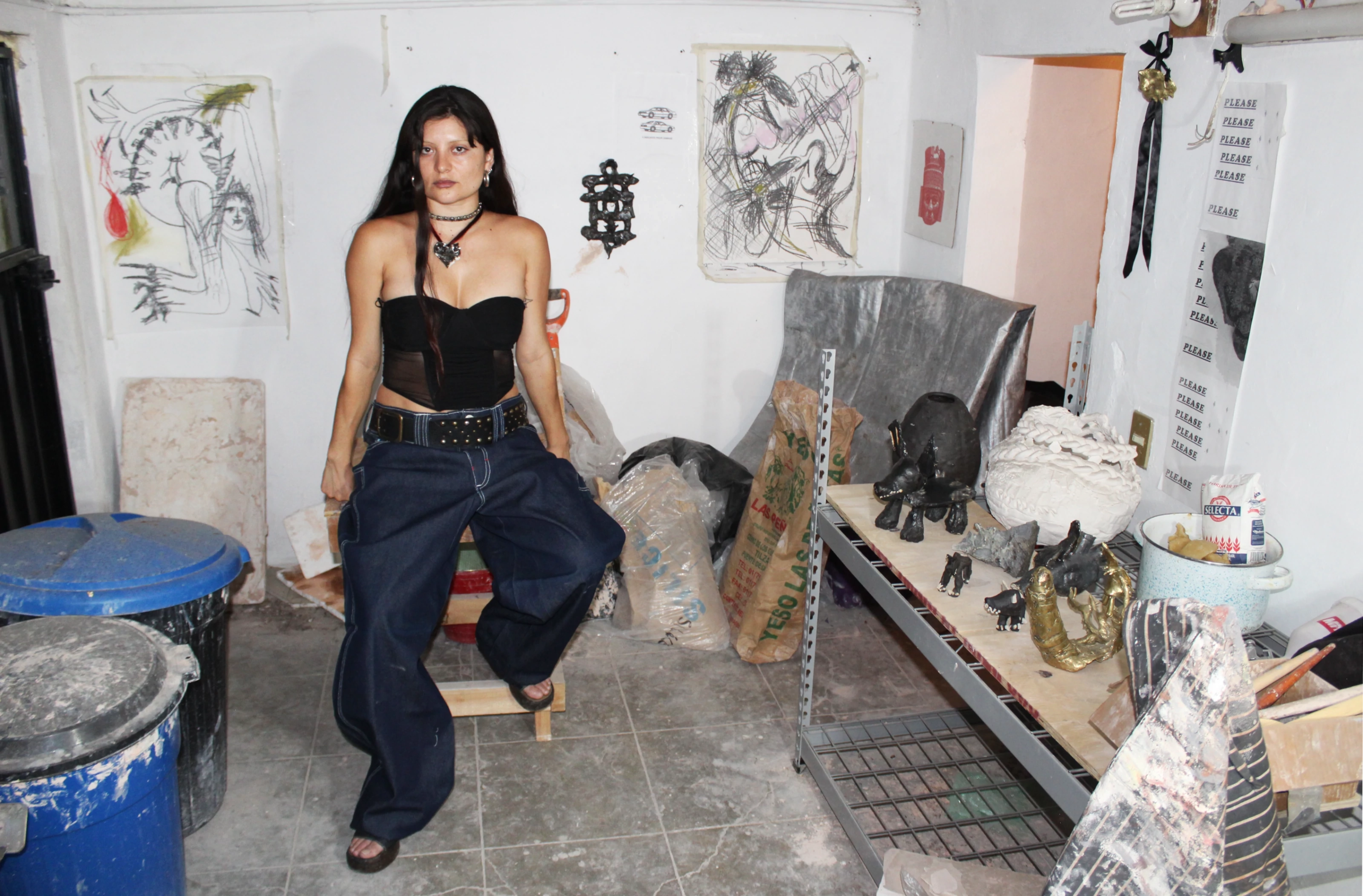
Los Angeles County, for the entirety of its modern existence, has been filled with such hidden oil wells. According to an article published in the L.A. Times, the first was hand-dug in Echo Park by Edward Doheny and Charles Canfield in 1892. The following century saw this become common practice, with “over sixty-eight named oil fields within the four-hundred-and-fifty-square-mile area of the Los Angeles Basin, according to the United States Geological Survey.” Though in typically Angeleno fashion, the poison is often hidden beneath a good-looking skeleton in public places: a street corner, a mall, or, in the case of Beverly Hills High, a high school. And while such burying is a general character trait of contemporary urbanity, it is felt quite pertinently in Southern California. Though historically, what is buried always finds a way to break through. This is, of course, a product of a larger, ever-permeating cultural tendency towards repression and explosion. It is no coincidence that Los Angeles has been the site of some of the ecological disasters and social unrest its nation has seen.
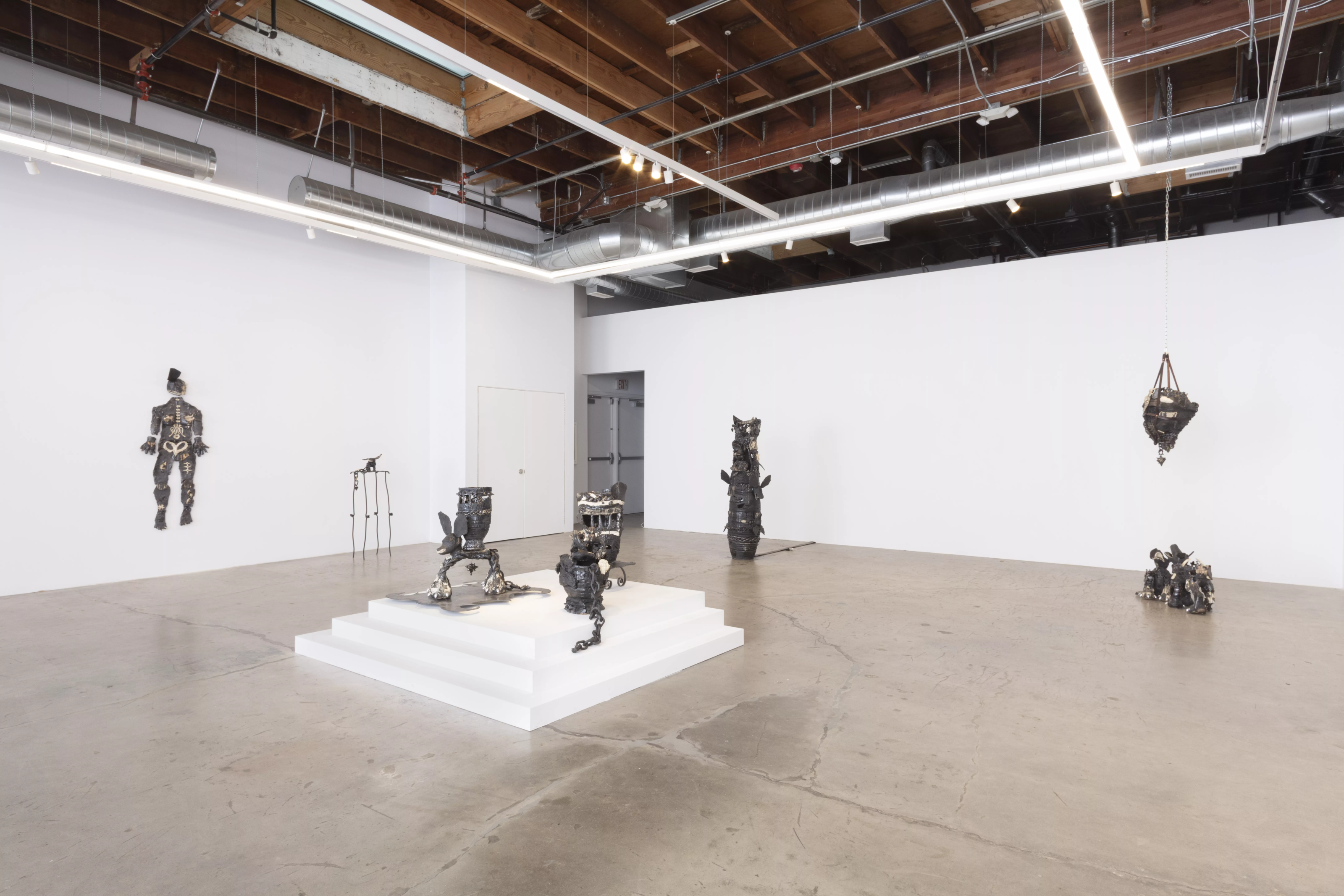
Karla Ekaterine Canseco, a Los Angeles-born and Mexico City-based sculptor and performance artist, has responded to this society of burying and bursting by developing a practice centred around the excavation. This is both in the literal and conceptual sense. The artist’s work, in its various forms, partakes in a revelatory and redemptive way of seeing. Melding viscerally timeless forms with contemporary sites of inquiry and significance, Canseco folds time upon itself— revealing the acute, violent and oft-hidden undercurrents of contemporary society (failing neoliberalism, colonial and environmental violence, etc) as products of historically cyclical pathologies while also revealing how the interdependence that forms them could be the key to their transcendence.
Oil is a central site of interrogation and inspiration for Canseco. “Petroleum is this weird carcass of beings from the past, bacteria, etc,” she says. “But now it’s this fuel. This lifesource. It’s not just something of the past, it’s also something of the present. I can’t just see it as something stagnant.” In Canseco’s eyes, oil is both the vibrant, vital fluid of a trans-historical organism as well as a symbol of the constancy of both destruction and creation. On the level of conceptual inquiry, petroleum and its geopolitical and environmental associations become the temporal bridge to the artist’s interrogation of the contemporary. Its image is littered throughout her work, such as in her recent performance called “An Ode to a Dying Car (How to Mourn a Machine),” where she appears to douse herself with oil in the company of sculptures reminiscent of relics. “I really think of petroleum as this entity, this thing that’s trying to break through,” she described. “If machines are alive, and I think that they are, it’s another kind of blood.”
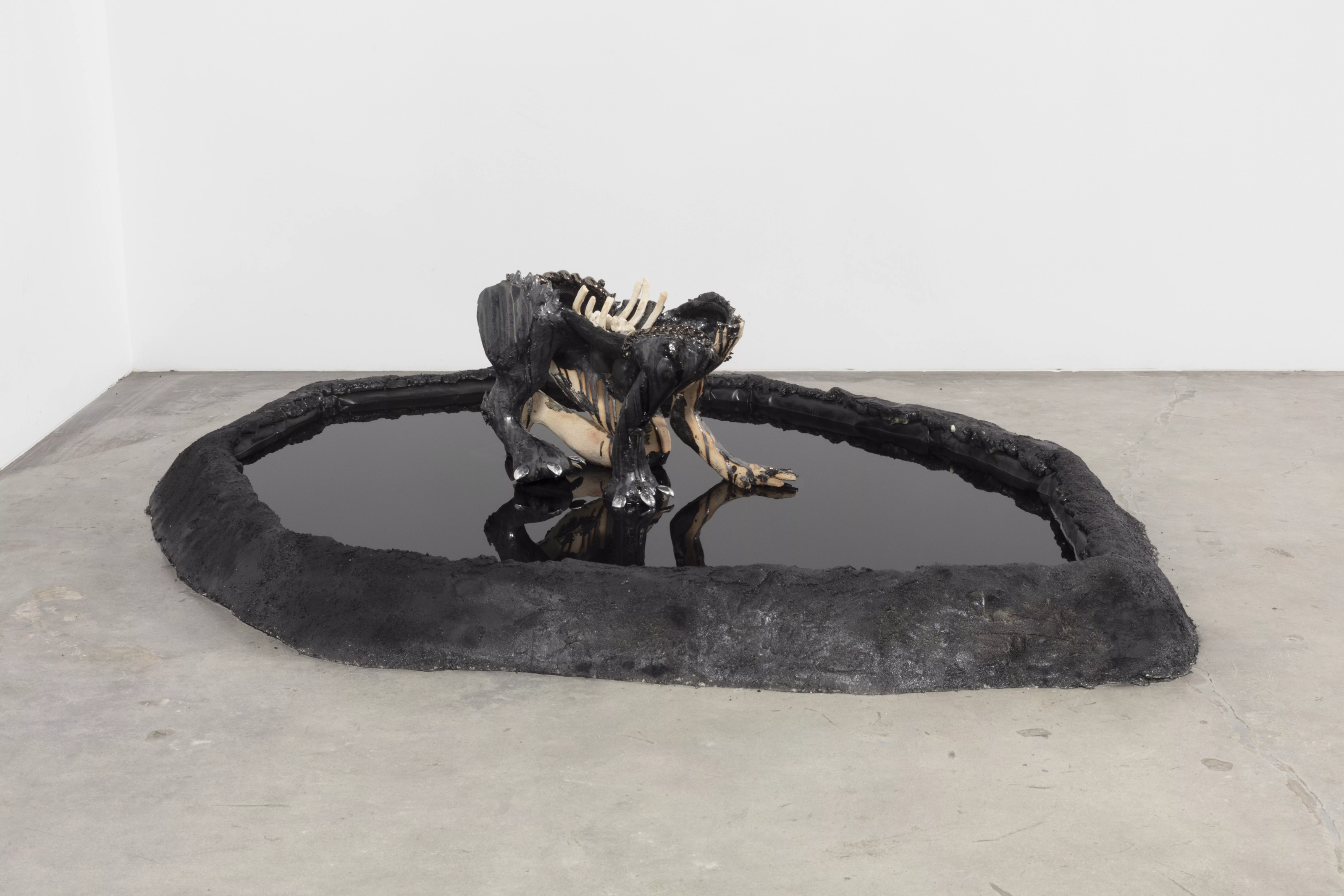
Canseco’s work is often associated with the realm of mythology and the related, on-trend art-world cliche of “myth-making.” And while pertinent, the idea can, at times, be reductive or even tokenizing. The artist rejects the notion that her work is strictly invested in identity-based historical reflection in the spirit of exploring something much more complex and contemporary. “I feel like I’m talking about very specific things and very specific violence. But I’m not interested in how, specifically in the U.S., there’s been this tokenization of people’s histories and backgrounds that often lacks much depth,” Canseco explained. Her work is not rooted in futurism or fetishistic nostalgia but is a precise representation of what myth has always attempted to wrap itself around: the embodied present. “I’m turning to the body now. The body is something that’s composed of different matters, something that’s not just a singularity but different entities functioning together. Materials have that, too. Metals have that. Clay has that. Petroleum has that. They’re holding all these entities and existing in different times.”
The sculptures in her recent show at Murmurs Gallery in L.A., titled Grietas de Acero (Steel Fissures), are as breathtakingly attractive as they are striking. They often appear to the eye as rough and glistening animal incarnations, yet the temporal dialogue that they manifest finds its strength in the intersection of the associations embedded within their shining bodies.
Canseco’s piece “Neobiota,” for example, depicts a skeletal creature on all fours crawling through what appears to be a pool of oil. Its form is seemingly mismatched: one side is held up by clawed animal legs and the other by something more akin to the limbs of a humanoid. Frozen in motion in a pool of petroleum, the creature looks as if it could be praying, or prayed to. In this way, it is simultaneously a creature of myth and the present: a deity drowning in its own lifeblood. There is something gut-wrenchingly visceral about what feels like an attempt by the artist at a venerative approach to the carcass form. And, while “Neobiota” is the most overtly carcass-esque, it is an aesthetic sentiment which can be felt throughout the work in Grietas de Acero.
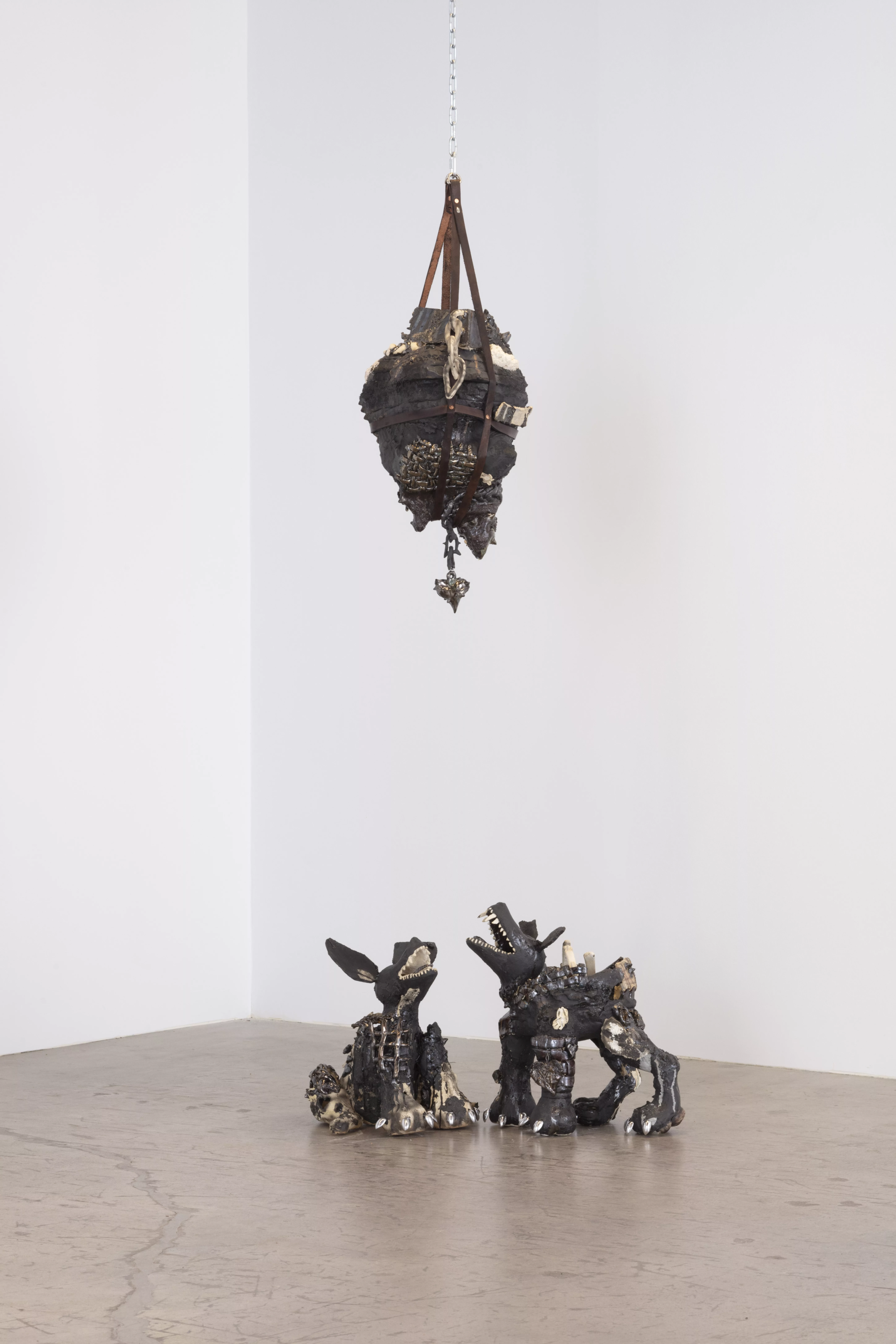
Though acutely aware of its general associations, Canseco’s work does not present the carcass-form as purely a product of past violence it is made from. In her gallery space, the image of the carcass is also simultaneously emblematic of the potential of interdependence and healing and the transcendence of the demeaned. It rejects the reductive standpoint that imposes upon it a classification of waste or worthlessness, of separation from the rest of living existence. “Karren Barad thinks about how matters have agencies. Interaction is when two things meet each other or act together, but intra-action is a mode of being in which agencies are woven together and don’t belong or constitute any singular subject. Rather, these forces/agencies are in constant conversation, never quite drawing any edges or separations. I’m interested in this.” For Canseco, the carcass can be a site of ongoing creation, an empty shell, and even armour. “I realized I make a lot of armour. And not just the armoured pieces that I wear. Even “Neobiota” is kind of empty inside. It looks like it can be put on. I make a lot of face pieces which can go over my face to protect it. Even those pieces that hang on the wall, “Pedazos de Perra”, are supposed to be these weird skin armours,” she explained. “I know that armour is often to protect or kill something, but they’re also this kind of shell, something that’s empty inside. It’s something that has to be filled or possessed to come alive. I think a lot about that in my work. It invites me to be possessed. It’s kind of scary in that way.”
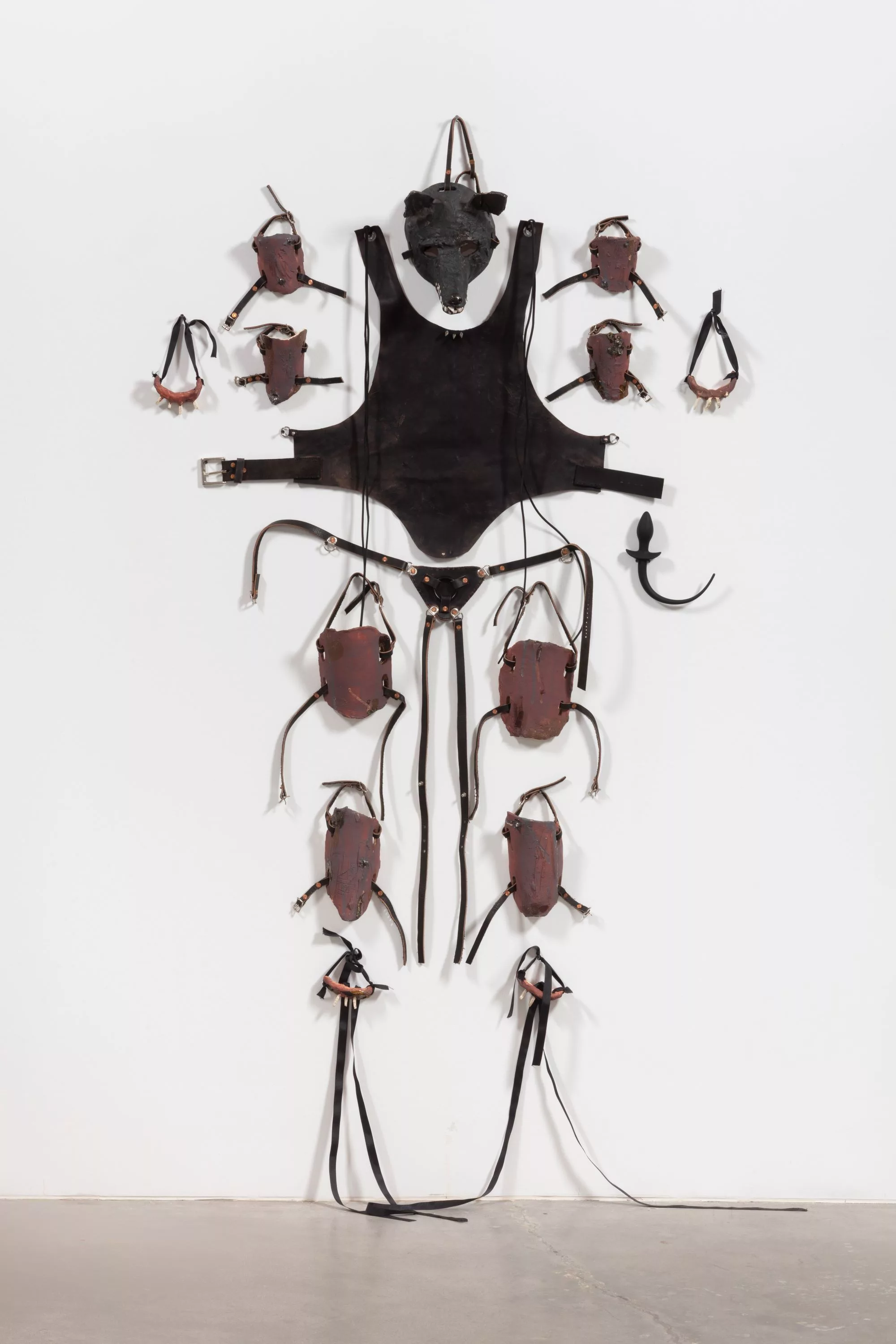
In the eyes of the sculptor, the gallery is a graveyard: a site of spiritual death. “I often feel like my work within a gallery is being suffocated, and it’s trying to break out. It’s part of the work to talk about that,” she affirmed. Her practice is thus a form of mourning and a meditation on the interconnectivity of forces of control. According to Canseco, “the industry is also a force, something that can possess, too.” Yet her work is also subtly optimistic. “There’s an interesting little struggle I have when I think about the work: like, is this an object that has a force? Or is this not an object and there are different matters acting through it? And I think it’s the same thing. I’m really interested in that. It’s about collaboration: about the crisis of contact. These objects hold power, but they also need collaboration to take form,” she explained. “It’s the same with a lot of these materials. The petroleum needs collaboration in order to be released. The clay needs the collaboration of alchemy and heat to transform. The same goes for the body, in a lot of ways.” Through her inquiry, she reveals the eternal nature of interdependence, working through a kind of mystically inclined materialism.

Herein lies the profundity of Canseco’s practice: by bringing the repressed to the forefront, it returns definitional autonomy to the subjects of its inquiry, forcing us to reexamine the complacent nature of our own perspectives. After all, what comes out in both excavation and explosion is never the cause of deep ontological transformation but rather a revelation. What appears before us in these moments of seeing is simply the after-image of what always was there. It is only from such moments of rapturous sight that we can begin to think about how to change what we now can see. This is the gift granted to us by Canseco’s work: new sight.
Words by Theo Meranze





